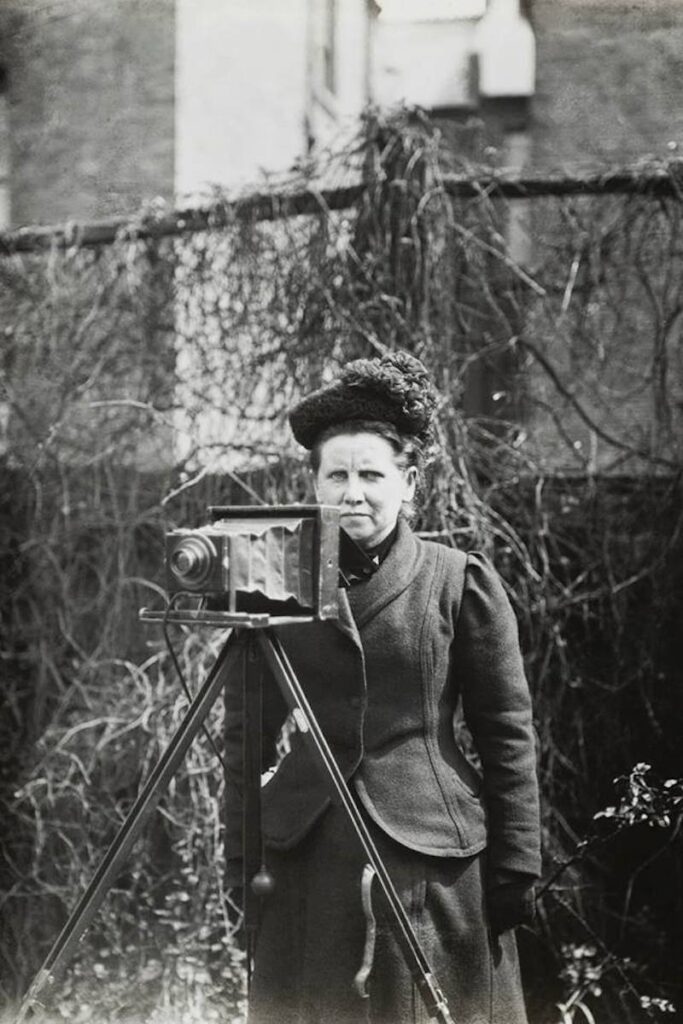Reseña
Self-taught and with a late passion, Christina Broom converted the need of making a living into a profession that she did not give up. Although she was never in the front, her images of soldiers expressed the fear, uncertainty, and despair of those men that went to battle without knowing their fate. Christina Broom was also a witness of suffragist movements and of the most important events of her country’s history.
https://www.cartierbressonnoesunreloj.com/fotografa-pionera-y-desconocida-el-caso-de-christina-broom (retrieved 13/4/2022)
Biografía
Cristina Livingston's family was from Scotland, even though she was born in King's Road 8, in Chelsea, London. She was the seventh child out of eight siblings. Her father was Alexander Livingston (1812-1875), a master making boots, and her mother was Margaret Fair (1826-1884).
Christina married Albert Edward Broom (1864-1912) in 1889, and they had a daughter on the 7th of August 1890. In 1903, after the failure of the family’s ironmongery business and other enterprises, Christina borrowed a camera and taught herself how to use it. She established herself in a stand in the Royal Mews, in the stables of Buckingham Palace, to sell postcards with the photographs she had taken. She worked there from 1904 to 1930.
When the family moved to Burnfoot Avenue, she arranged the cellar and turned it into a darkroom. Her daughter, Winifred, left school to help her mother, whereas her husband, Albert, wrote the legend of the pictures. The postcards sold so well that in a single night the Brooms printed 1000 copies.
She was appointed official photographer of the Household Division between 1904 and 1939, and she had a darkroom in the Chelsea Barracks. Broom took a lot of photographs from local scenes, including the Palace and the marches of The Boat Race and of the suffragists. She took photographs of the Prince and Princess of Wales during the inauguration of the tramway to Westminster. She took photographs of soldiers during Christmas in 1914 and 1915 too. She supported the suffragist movement at the beginning of the 20th century and documented its leaders and the political and social actions of the movement. She also took photographs of the historical funeral of Edith Cavell, the nurse who was executed by the German.
Her husband Albert died in 1912. Then, Christina moved to Muster Road, in Fulham, with her daughter Winifred, and changed her professional name to Mrs Albert Broom. She was the first English photographer who published photos in journals, weekly papers, and other periodic publications. In the 1920s and 1930s, her work appeared in publications like The Illustrated London News, The Tatler, The Sphere and Country Life.
Christina Broom died on 5 June 1939 and was buried in the ancient cemetery in Fulham. Her daughter Winifred could protect her negatives because they were collected in public institutions. It is calculated that she sold more than 42,000 copies of her photographs throughout her life.
https://en.wikipedia.org/wiki/Christina_Broom (retrieved13/4/2022)




